The nine muses, tapestry, grass juice, 19th century
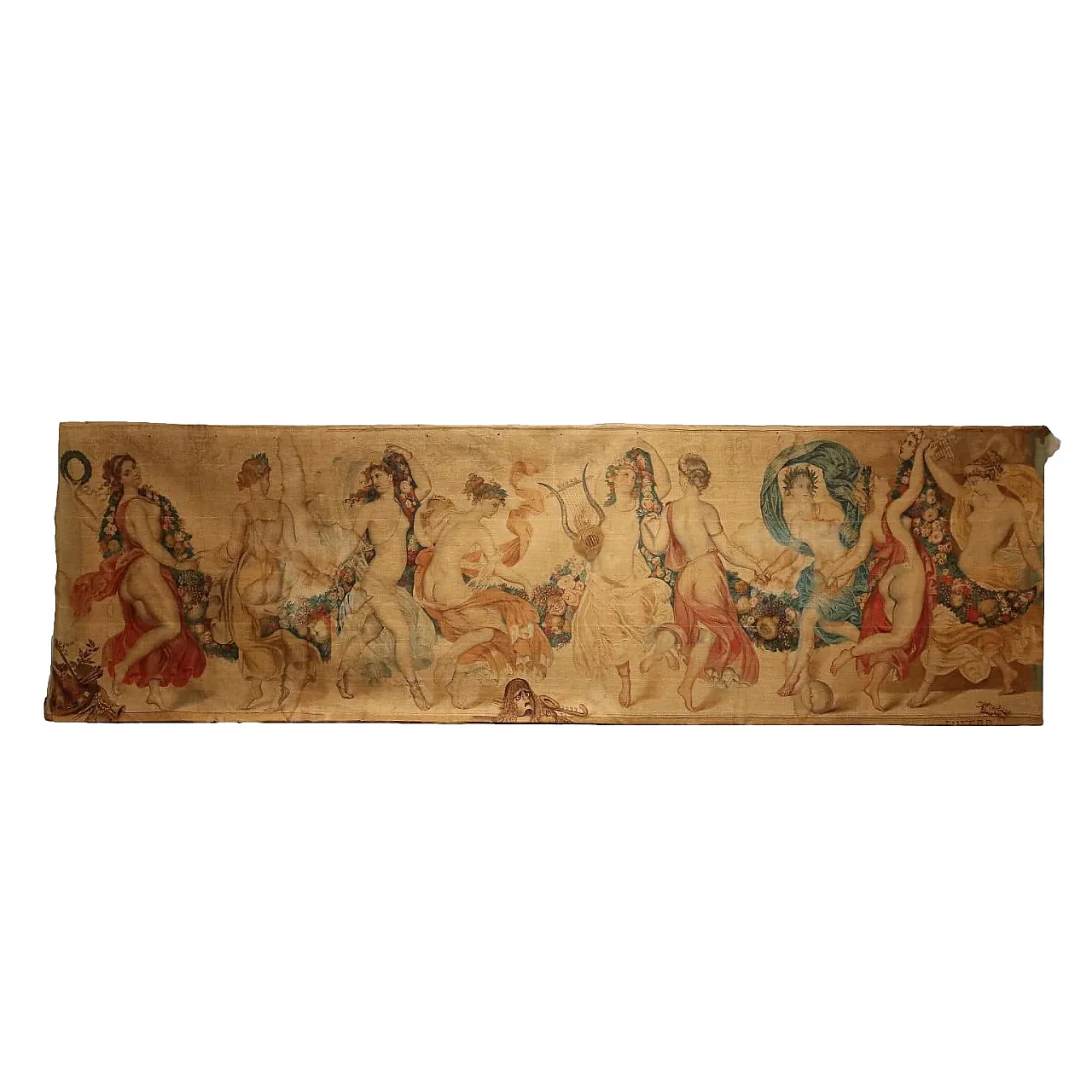
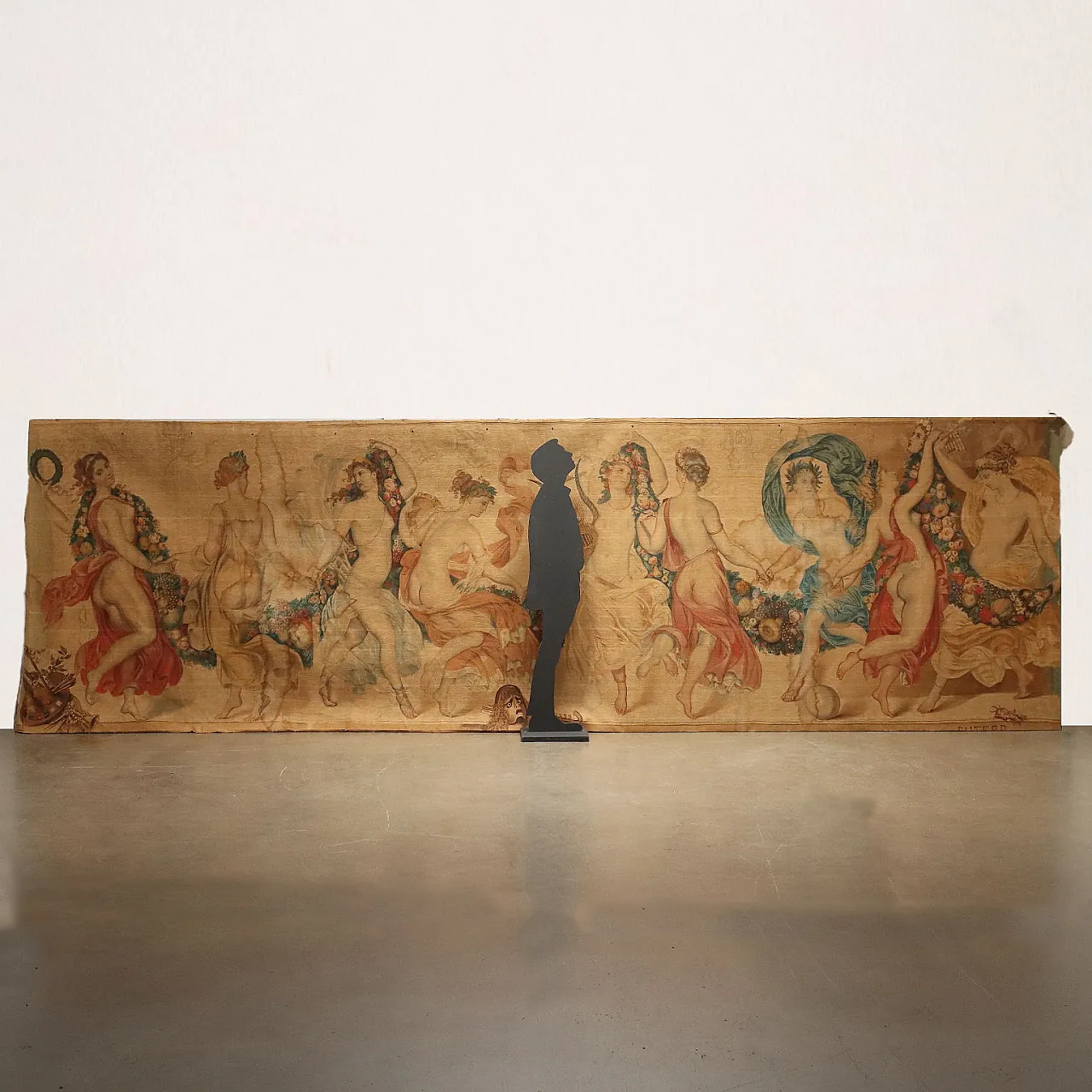
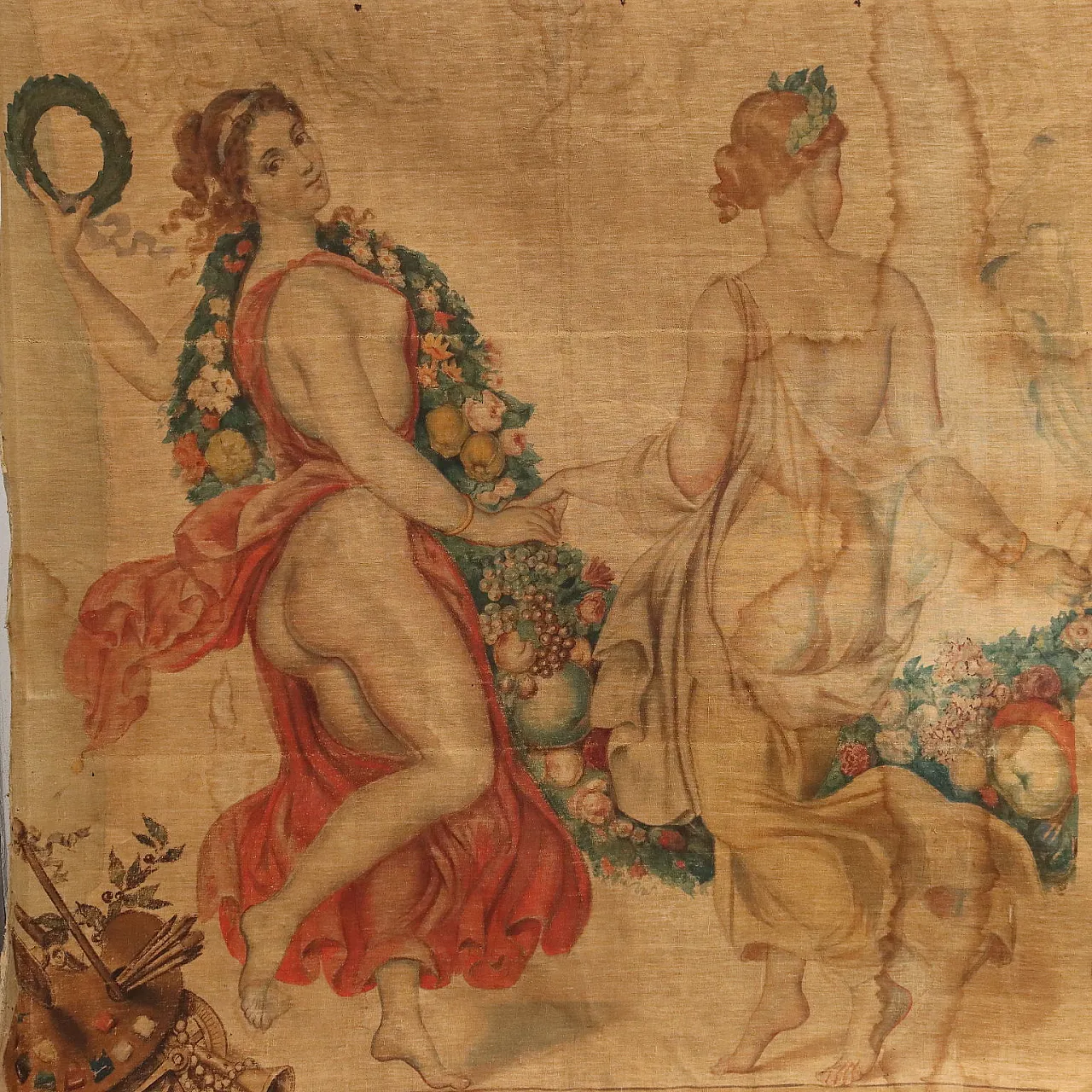
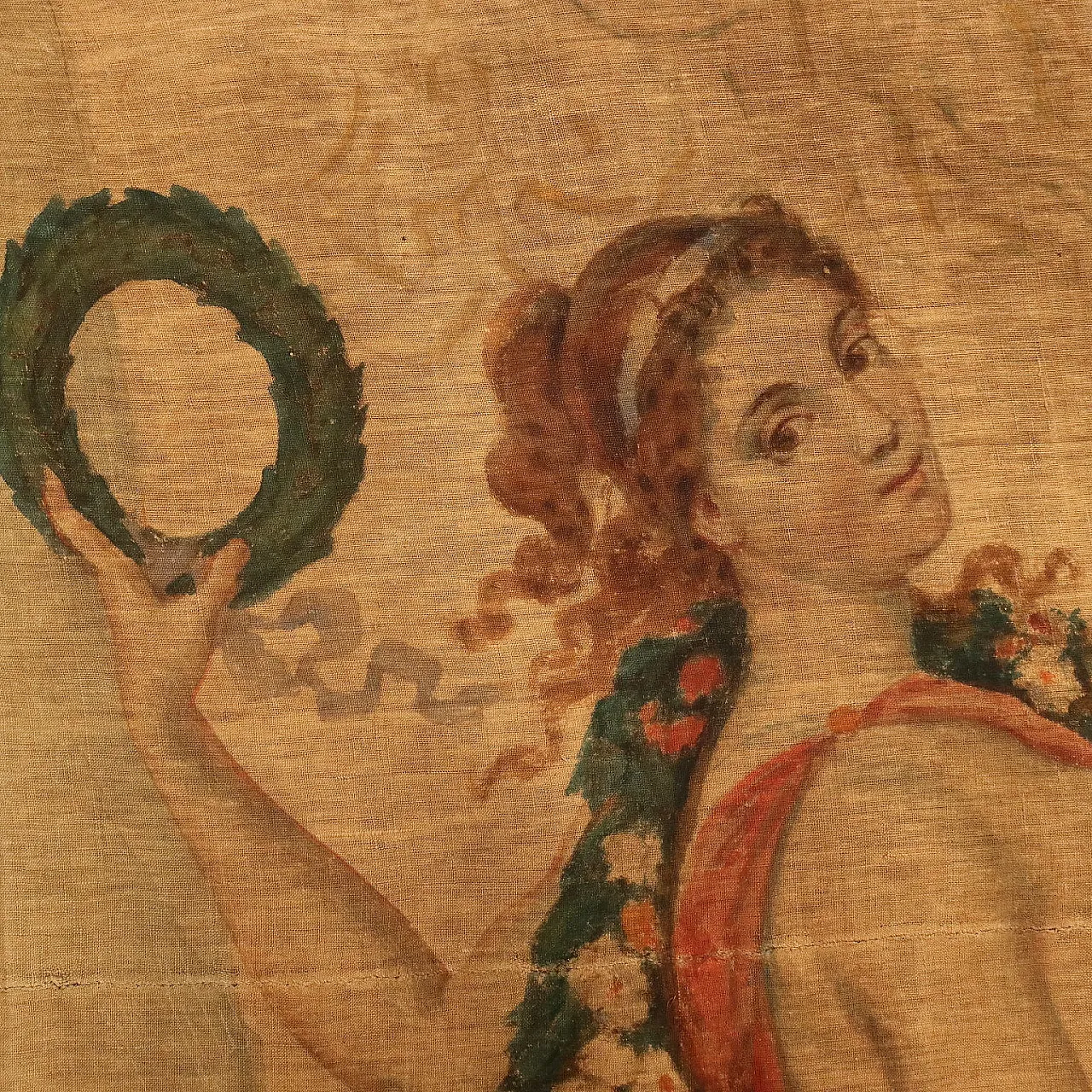
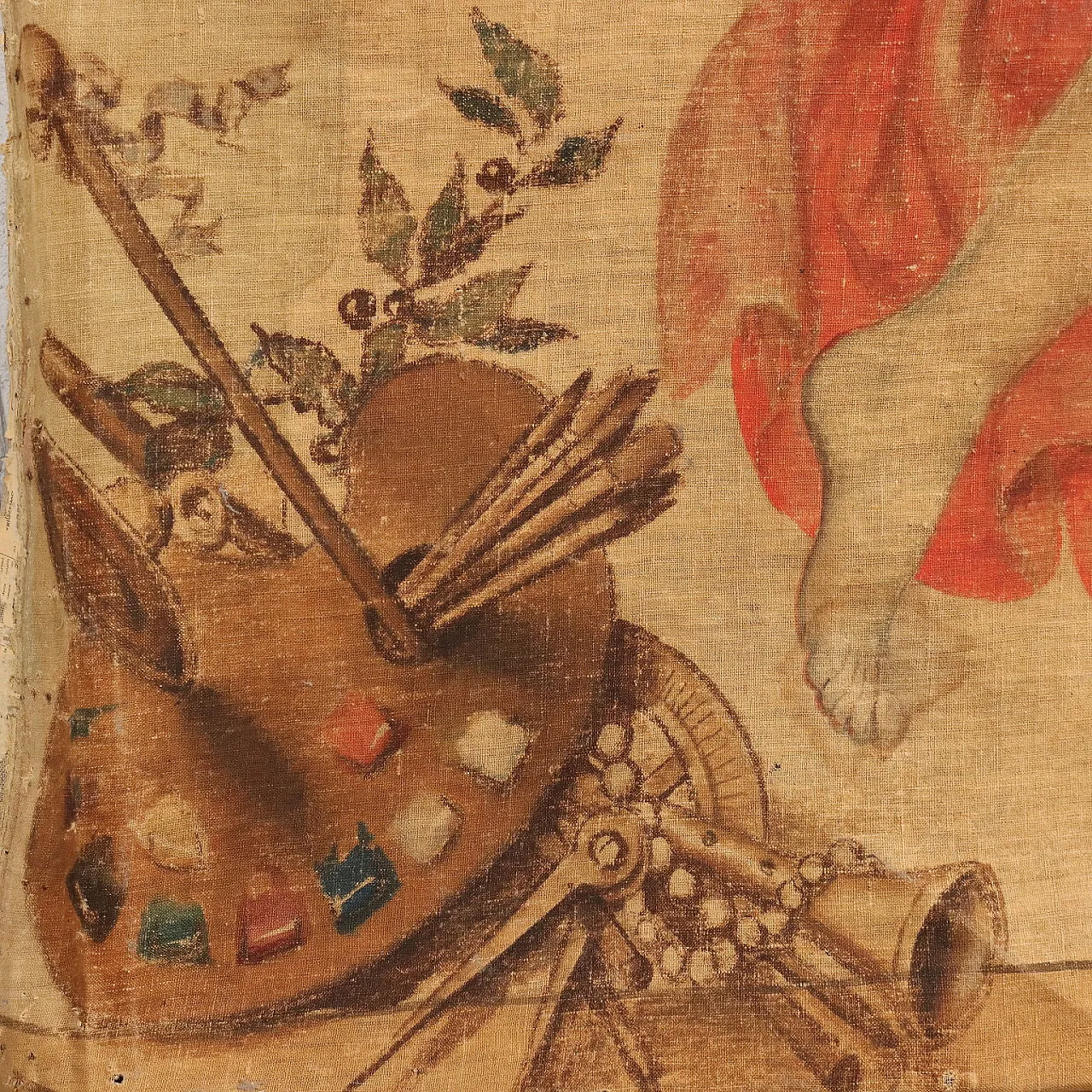
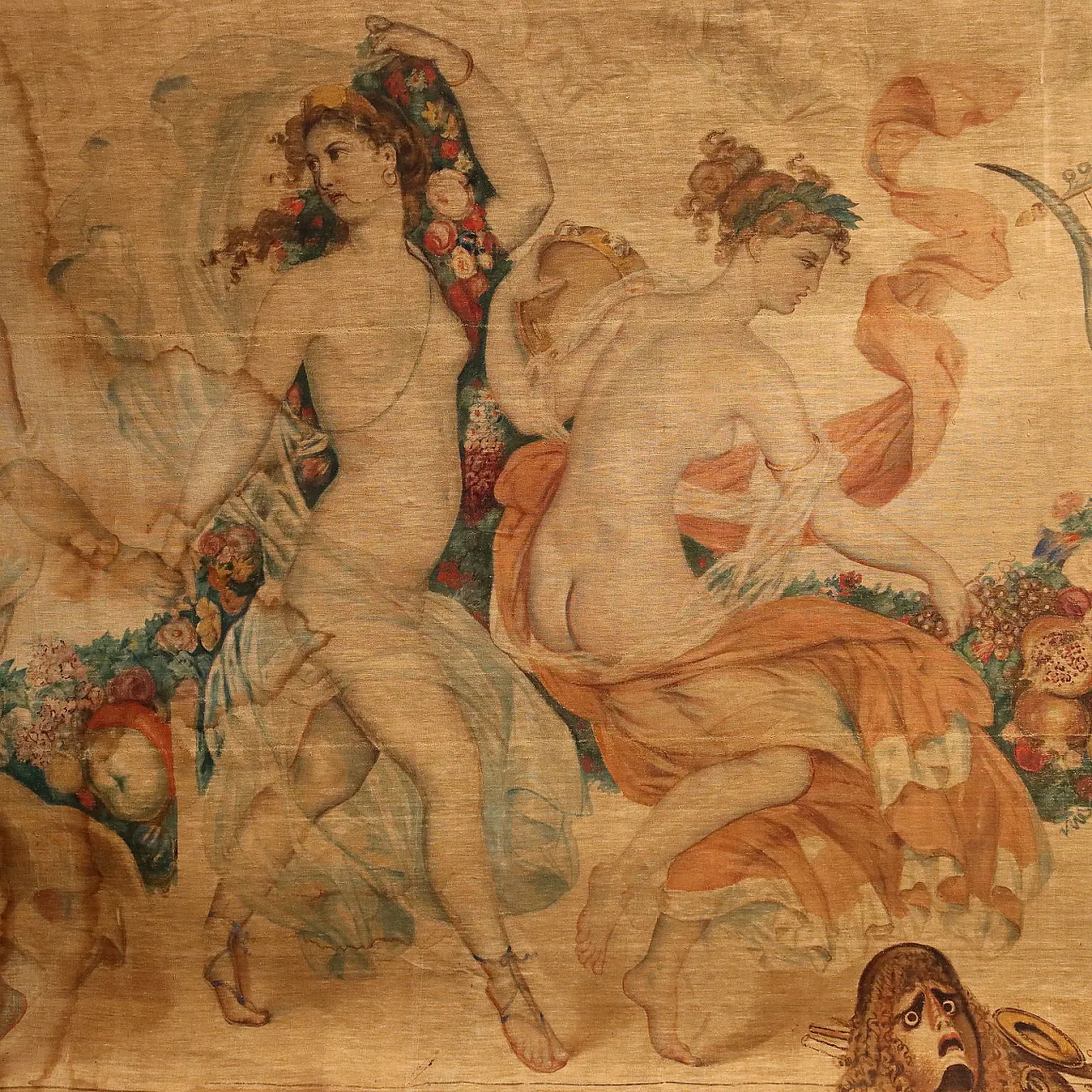
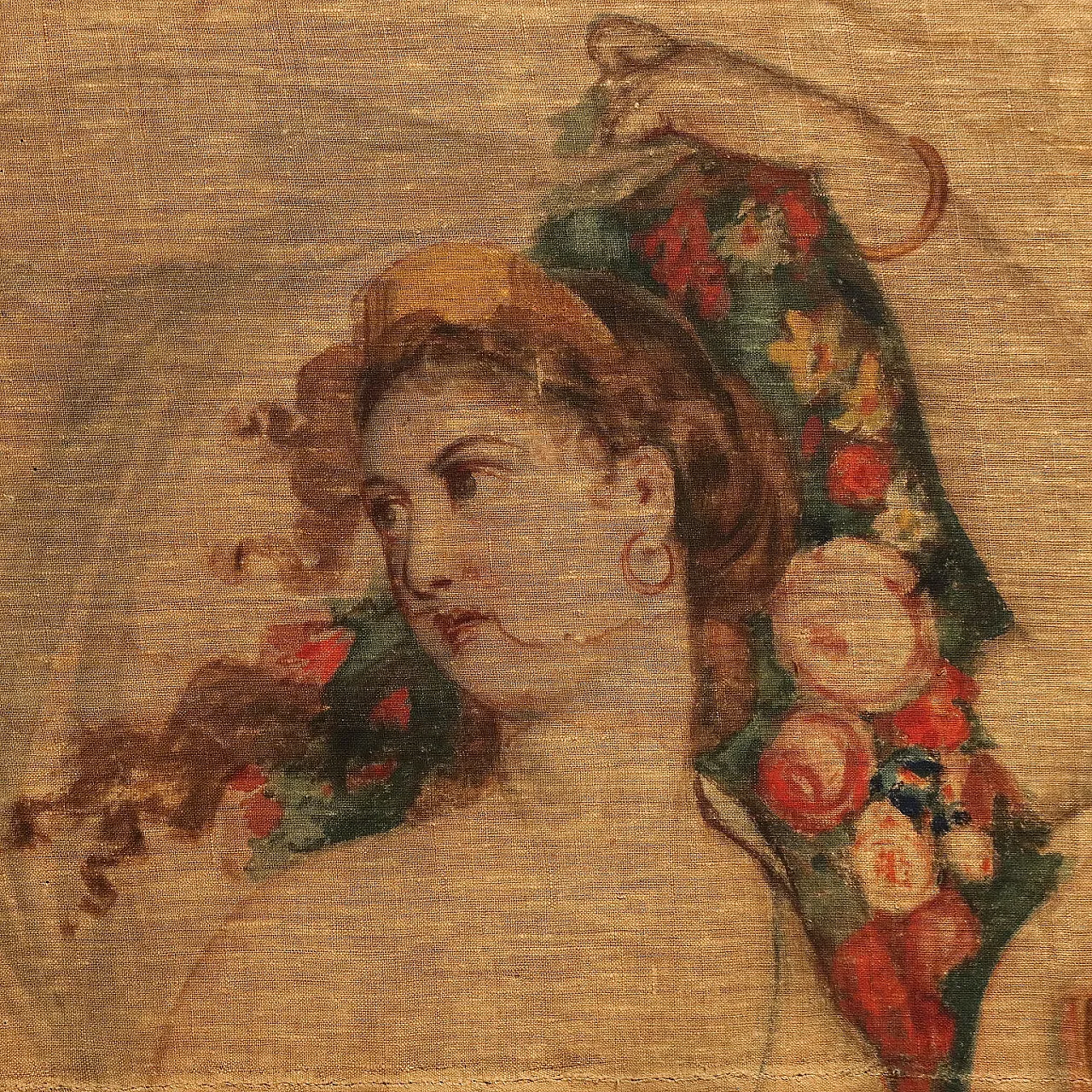
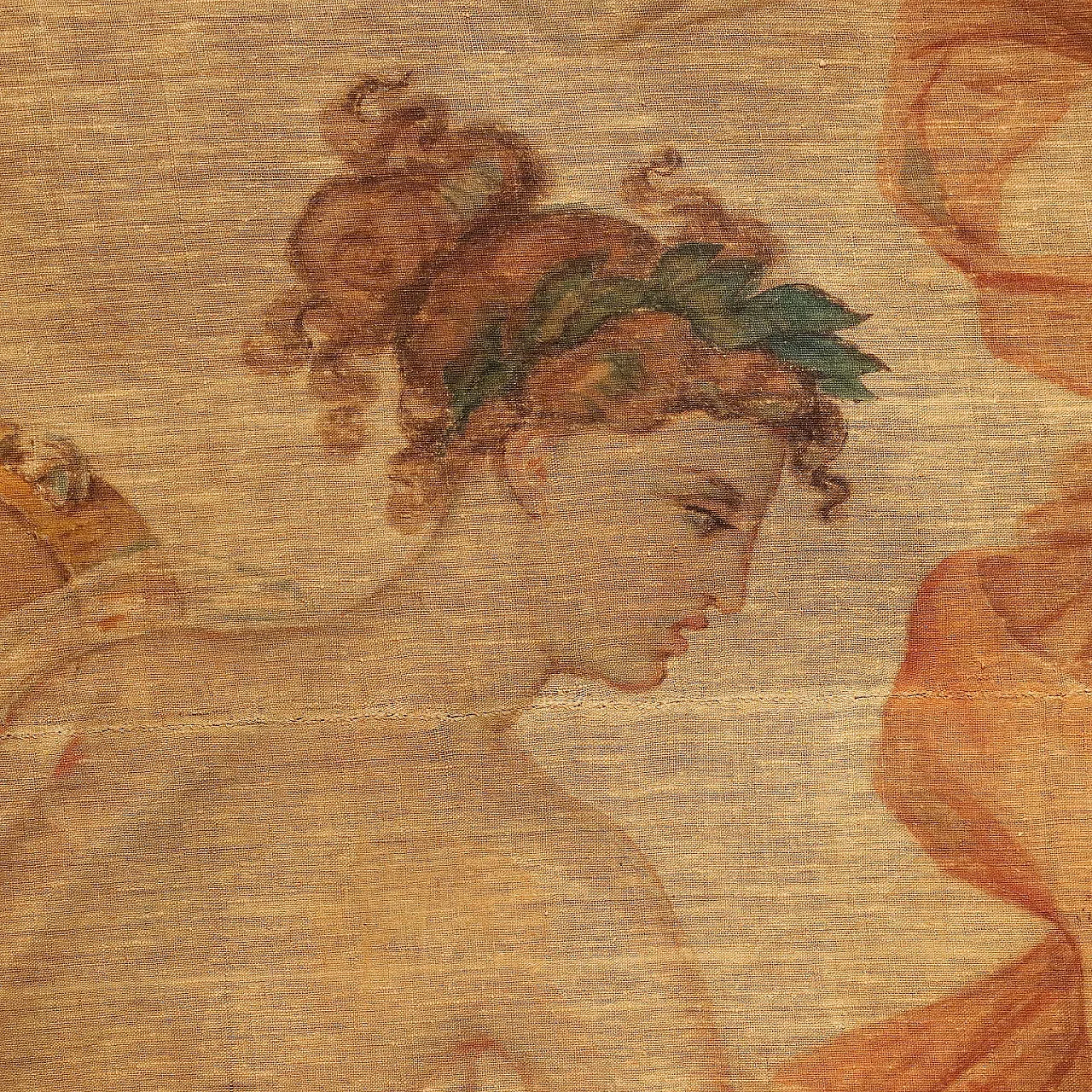
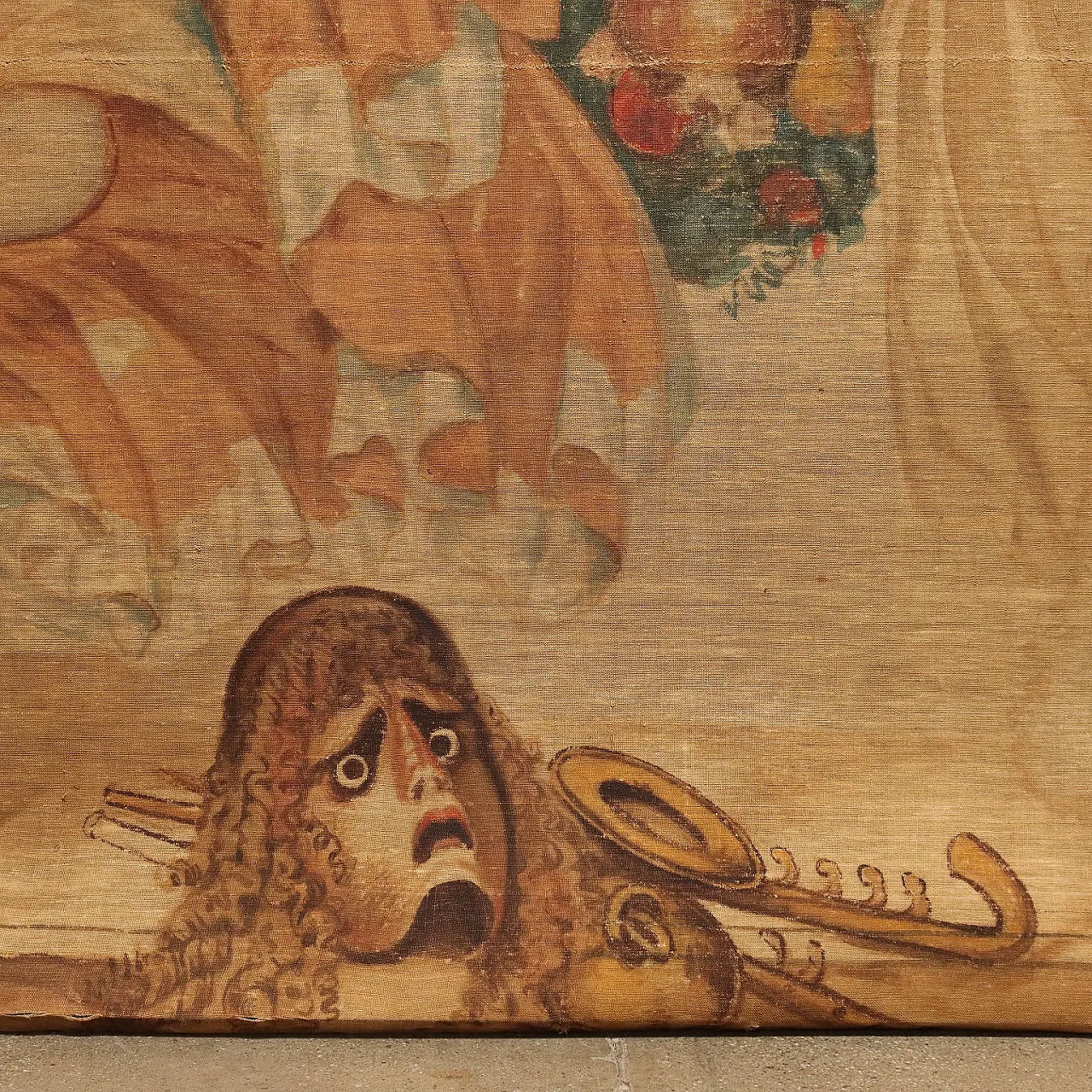
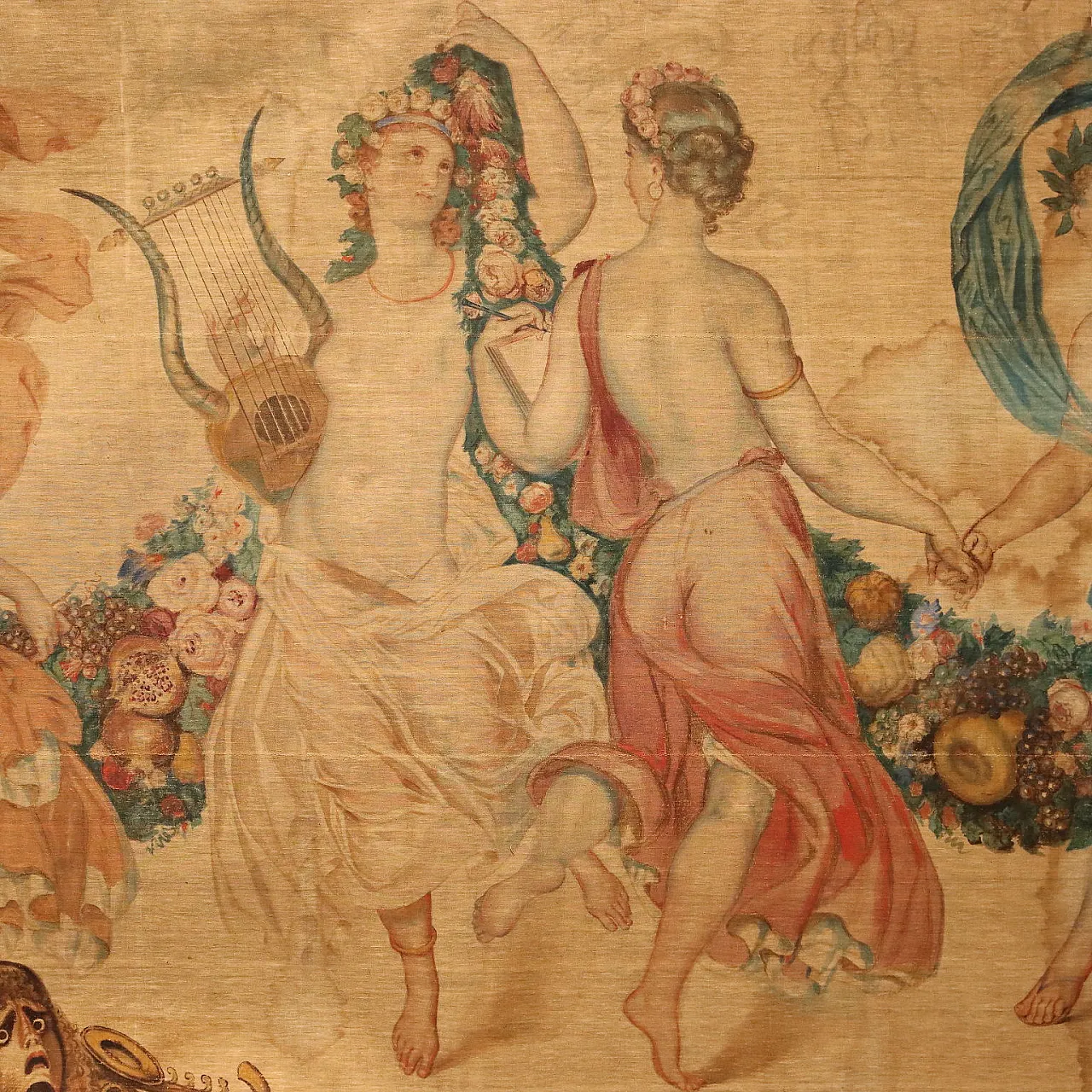










Tapestry. The word Euterp appears at the bottom right. The enormous grass juice depicts the nine Muses, female Greek divinities, all sisters, as daughters of Zeus and Mnemosyne, and having the god Apollo as their guide. They represented the supreme ideal of Art, understood as the truth of the "Everything" or the "eternal magnificence of the divine". Initially considered in a generic way as divinities of song and joyous dances, responsible for putting into music and verse stories such as the origin of the world, the birth of gods and men, the exploits of Zeus, and often depicted accompanied by various musical instruments, starting from the Hellenistic era, all singing and musical expressions were associated with them, including sad and funeral ones, and other arts such as theatre, and each of them was associated with a specific genre of art, so that they could be invoked individually to exercise their inspiration and protection. The word "Euterp"refers to the name of one of them, Euterpe, muse of lyric poetry and music, traditionally depicted with a flute; but the name Euterpe etymologically means "She who cheers" who brings joy, and one can therefore think that the choice of this name to title the tapestry refers to the most ancient function of the Muses, those of bringers of joy through art. In this presentation, the muses appear dancing, dressed in veils and flowering branches; in their hands or placed next to them, instruments or other objects symbolizing the art that they inspire appear (both tragic and comic theatrical masks, the pictorial palette, various musical instruments...). The large painting has signs of wear and humidity stains.
ID: 2096-1713202315-88189
